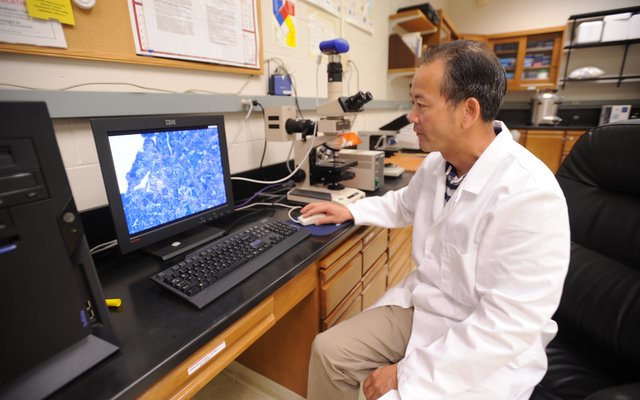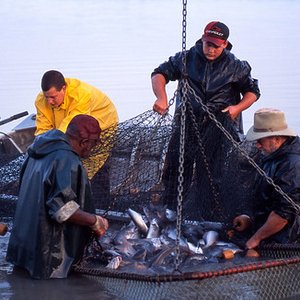Hanping Wang, who manages The Ohio State University’s Ohio Center for Aquaculture Research and Development, has succeeded in raising faster-growing fish by artificially mating them in a not so typical way. Inside cool water-filled tanks in southern Ohio, the laws of nature are being defied: female yellow perch mate with other female yellow perch; male bluegills with other male bluegills. On average, the resulting offspring reach market size six months faster than bluegills or yellow perch bred out of standard male-female mating. That’s because among yellow perch, females grow quicker than males; among bluegills, males faster than females.
“We’re using the animals’ maximum potential to make them grow faster for human benefit,” Wang said. “We have to do it this way to meet the growing need for food, specifically protein. You need to have a process to produce more animals – more chickens, cows, pigs and fish.”
It seems there might be a downside to unnaturally mating fish, but Wang says that’s not the case. The practice of mating females together or males together might be unusual but does not produce problem fish – that is, assuming no relatives are mated with each other, Wang said.
Among yellow perch, the females grow 60 to 70 percent faster than the males, and they grow larger than the males. As a result, it makes sense that a breeder would want to produce the fastest-growing female yellow perch. So Wang did exactly that. He mated females to females with the help of grants from the U.S. Department of Agriculture and the state-based Ohio Sea Grant program, which funds research in the Great Lakes and aquaculture.
While they remained females at the chromosome level — possessing the XX chromosome pair as opposed to the XY chromosome pair that typical males have — they still were able to produce sperm. That allowed the females to mate with other female yellow perch. It might sound odd, perhaps, but it worked. The results were “neo-males,” or “pseudo-males,” as Wang calls them.
The offspring produced by the mating of a neo-male with a standard female yellow perch were all females, since there was no Y chromosome in the mix. And the female offspring grew as expected, 60 to 70 percent faster than any female offspring born out of the standard arrangement of a male and female mating with each other.
On average, it takes a farmer 16 months to raise a yellow perch to reach market size. Now it can take as little as 10 months if neo-males are mated with typical female yellow perch, Wang said.
“The farmer saves on labor, saves on feed and saves on space,” he said.
With bluegills, the males grow faster and bigger than the females. So, Wang took males and mated them with males through a process similar to what was done with the yellow perch, so they became what Wang calls “neo-females.” The offspring of a neo-female bluegill and a male bluegill were all male fish that could grow to 1 pound, the size needed to sell them, in about a year, cutting three to five months off the typical time needed for them to mature.
Along with mating females with females and males with males, Wang and his colleagues have conducted standard mating with yellow perch to generate the fastest-growing males and the fastest-growing females. They began with 800 yellow perch, 100 taken from eight states in the Midwest and Northeast, including Ohio. The DNA of the fish was analyzed, then the fish that were related were put in different tanks to prevent the possibility of them mating. Each fish was placed in one of a series of tanks with males and females, and they were allowed to mate as usual, males with females.
From the first round of fry, the scientists selected the 200 fastest-growing male and female fish from each cohort – then those pairs mated, and the same process occured over and over to get genetically improved fish. Across the three sites, and on average, the improved fish grew 35 percent faster than the unimproved fish, meaning the ones whose parents came together naturally without any special mating arrangements. Not only do they grow 35 percent faster, they have a higher survival rate, 20 percent higher. Whether bluegills and yellow perch can be made to grow even faster is uncertain. “We don’t know,” Wang said. “We’re working on that.”
Critical to the selective fish breeding program is a key accomplishment of Wang’s research team: Completing genome sequencing of both yellow perch and bluegills. By changing the genetic makeup of the fish, researchers can select for high disease resistance and larger, faster-growing fish, Wang said. “We know long term it will have a huge impact.”
Wang has also authored a book on selective fish breeding that will be available this summer.












